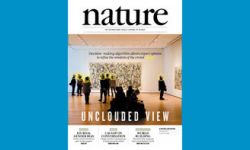
In the current issue of Nature, a team of physicists from Copenhagen, Vienna and Innsbruck describe the new research field of chiral quantum optics. It offers fundamentally new functionalities and applications.
The authors, including Hannes Pichler and Peter Zoller, state in the abstract of the research review: “Advanced photonic nanostructures are currently revolutionizing the optics and photonics that underpin applications ranging from light technology to quantum-information processing. The strong light confinement in these structures can lock the local polarization of the light to its propagation direction, leading to propagation-direction-dependent emission, scattering and absorption of photons by quantum emitters. The possibility of such a propagation-direction-dependent, or chiral, light–matter interaction is not accounted for in standard quantum optics and its recent discovery brought about the research field of chiral quantum optics. The latter offers fundamentally new functionalities and applications: it enables the assembly of non-reciprocal single-photon devices that can be operated in a quantum superposition of two or more of their operational states and the realization of deterministic spin–photon interfaces. Moreover, engineered directional photonic reservoirs could lead to the development of complex quantum networks that, for example, could simulate novel classes of quantum many-body systems.”